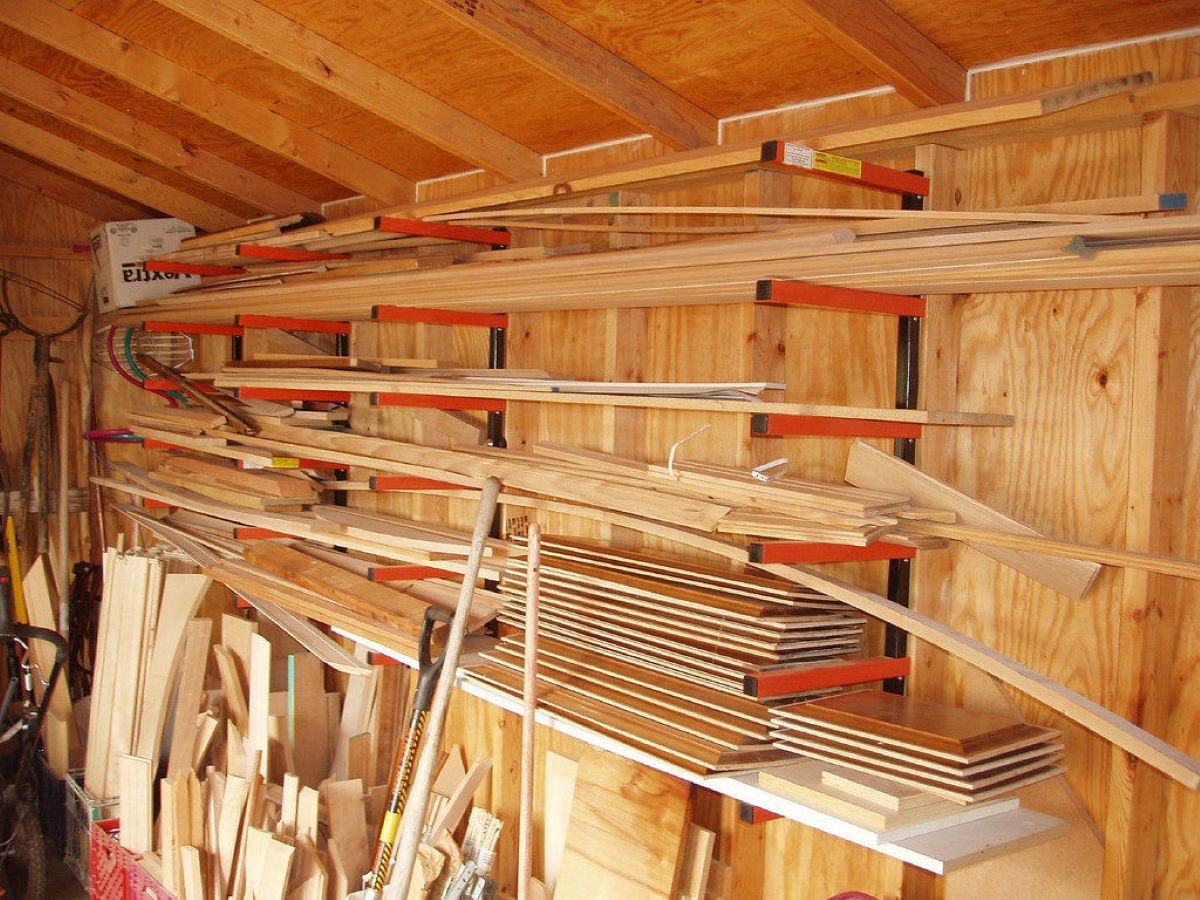

Articles
How To Store Lumber In Garage
Modified: January 24, 2024
Learn the best techniques for storing lumber in your garage with these helpful articles. Find tips and tricks for maximizing space and preventing damage to your wood.
(Many of the links in this article redirect to a specific reviewed product. Your purchase of these products through affiliate links helps to generate commission for Storables.com, at no extra cost. Learn more)
Introduction
When it comes to woodworking, having a good stock of lumber is essential. However, storing lumber can sometimes be challenging, especially if you have limited space. If you find yourself with a pile of lumber taking up valuable real estate in your garage, it’s time to consider organizing and optimizing your storage system. In this article, we will guide you through the process of effectively storing lumber in your garage.
Whether you’re a seasoned woodworker or just a hobbyist, keeping your lumber in a safe and organized manner not only helps protect your investment, but also makes it easier to access the materials you need for your projects. By following the tips and techniques outlined in this article, you can maximize the available space in your garage while ensuring your lumber remains in top condition.
Before we dive into the specifics of storing lumber in your garage, it’s important to address a few safety precautions. Lumber can be heavy and unwieldy, so it’s crucial to take proper precautions to avoid any accidents or injuries. Always wear appropriate protective gear, such as gloves and safety glasses, when handling lumber. Additionally, be mindful of the weight limits of your storage racks and shelves to prevent any structural failures.
Key Takeaways:
- Prioritize safety by wearing protective gear, utilizing proper lifting techniques, and securing unstable piles when organizing and storing lumber in your garage. Maintaining a clutter-free workspace and keeping flammable items away are crucial for a safe environment.
- Optimize your garage space by utilizing vertical storage, wall-mounted racks, and overhead storage racks for efficient lumber storage. Protect your lumber from moisture and pests by choosing a dry storage area, using moisture barriers, and regularly inspecting and maintaining your stored lumber.
Read more: How To Store Lumber
Safety Precautions
Before you start organizing and storing your lumber in the garage, it’s important to prioritize safety. Here are some key safety precautions to keep in mind:
- Wear protective gear: Always wear safety glasses to protect your eyes from flying debris. Additionally, use gloves to prevent splinters and injuries while handling rough lumber.
- Use proper lifting techniques: Lumber can be heavy, so it’s crucial to use proper lifting techniques to avoid straining your back. Bend your knees and lift with your legs, not your back.
- Check for nails and other hazards: Before storing any lumber, inspect it for nails, screws, or any other potential hazards. Remove any protruding objects to prevent injuries.
- Secure unstable piles: If you have a large pile of lumber, make sure it is stable and won’t topple over. Use straps or bungee cords to secure the pile and prevent accidents.
- Maintain a clutter-free workspace: As you organize your garage, keep the area around your lumber storage clear of clutter. This reduces the risk of tripping or falling.
- Keep flammable items away: Lumber is highly flammable, so it’s important to keep it away from any flammable materials, such as gasoline or paint thinners. Store these items separately to minimize fire hazards.
By following these safety precautions, you can create a safe environment for storing and accessing your lumber in the garage. Always prioritize your safety and that of others when working with materials like lumber.
Clearing Space in the Garage
Before you can effectively store lumber in your garage, you’ll need to clear out some space. Here are some tips to help you maximize the available space:
- Sort and declutter: Start by sorting through your garage and decluttering any unnecessary items. Get rid of broken or unused items and consider donating or selling things that are still in good condition but no longer needed.
- Utilize vertical space: Take advantage of the vertical space in your garage by installing shelves, pegboards, or overhead storage racks. This will help free up valuable floor space for storing lumber.
- Create zones: Divide your garage into different zones based on functionality. Allocate specific areas for tools, gardening equipment, and lumber storage. This will make it easier to find and access your materials.
- Invest in storage solutions: Consider investing in storage solutions such as storage cabinets, bins, or rolling carts to keep your garage organized. These can help keep smaller items tidy and easily accessible.
- Hang tools on wall: Install hooks or a pegboard on the wall to hang frequently used tools. This not only saves space but also keeps your tools neatly organized and easily accessible.
- Utilize ceiling space: If your garage has high ceilings, install a ceiling-mounted storage system to store less frequently used items. This is a great way to utilize unused space and keep your garage floor clutter-free.
- Make use of corners: Corners often go unused, so consider installing corner shelves or utilizing corner space for vertical storage. This allows you to take advantage of every inch of your garage.
By implementing these strategies, you can create a clear and well-organized space in your garage, making it easier to store and access your lumber efficiently.
Cleaning and Organizing the Garage
Once you’ve cleared out space in your garage, it’s time to clean and organize the area to create an optimal storage environment for your lumber. Here’s how you can get started:
- Sweep and clean: Start by sweeping or vacuuming the garage floor to remove any dirt, dust, or debris. If your garage floor is particularly dirty, consider using a pressure washer to give it a thorough cleaning.
- Remove stains: If you have any stubborn stains on the floor or walls, use appropriate cleaning solutions to remove them. This will not only improve the appearance of your garage but also create a cleaner environment for your lumber.
- Install lighting: Good lighting is crucial in a well-organized garage. Install bright overhead lights or task lights to ensure you can see clearly when working or accessing your stored lumber.
- Group similar items: Categorize and group similar items together. Keep all your woodworking tools in one area, gardening equipment in another, and lumber in its designated storage spot. This will make it easier to find what you need.
- Label storage containers: If you’re using bins or containers to store smaller items, make sure to label them. This will help you easily identify the contents and streamline the organization process.
- Utilize clear plastic bins: Opt for clear plastic bins rather than opaque ones. This allows you to see the contents without having to open each bin, saving you time and effort when searching for specific items.
- Use pegboards and hooks: Install pegboards on the walls to hang frequently used tools. Use hooks for items such as extension cords, ropes, or smaller hand tools. This keeps them easily accessible and prevents clutter.
- Designate a workspace: If you have enough space, designate a specific area in your garage as a workspace for your woodworking projects. This will keep your tools and materials organized while providing a dedicated area for crafting.
By following these cleaning and organizing tips, you can transform your garage into a well-structured and efficient space, making it easier to store and access your lumber as needed.
Preparing the Lumber for Storage
Before you start storing your lumber in the garage, it’s important to properly prepare the wood to ensure its longevity and quality. Follow these steps to prepare your lumber for storage:
- Inspect for damage: Before storing your lumber, carefully inspect each piece for any signs of damage, such as rot, mold, or insect infestation. Remove any compromised pieces from the rest of your stock.
- Plane and sand: If your lumber has rough edges or uneven surfaces, consider planing and sanding it before storing. This not only improves the quality of the wood but also reduces the risk of any sharp or protruding edges that could cause injury.
- Bundle long boards: If you have long lumber boards, it’s a good idea to bundle them together using straps or twine. This prevents them from warping or bowing over time.
- Seal the ends: To prevent excessive moisture loss and splitting, it’s recommended to seal the ends of your lumber boards. You can use a commercial wood sealer or even wax to seal the ends effectively.
- Stack similar sizes together: Organize your lumber stacks based on size and type. Grouping similar sizes together makes it easier to find the right pieces for your projects later on.
- Keep lumber off the ground: It’s important to keep your lumber off the ground to prevent moisture absorption or potential damage from pests. You can use pallets, scraps of wood, or even commercial lumber racks to elevate your stacks.
- Allow for air circulation: Ensure that there is enough space between each stack of lumber to allow for proper air circulation. This helps prevent moisture build-up and promotes better preservation of the wood.
- Protect from direct sunlight: Direct sunlight can cause wood to fade or warp over time. If possible, position your lumber stacks away from windows or install blinds or curtains to block out excessive sunlight.
By taking the time to properly prepare your lumber for storage, you can ensure that it remains in optimal condition until you’re ready to use it for your woodworking projects.
Read more: How To Store Lumber Outside
Proper Stacking Techniques
Stacking your lumber in a proper and organized manner is essential for efficient storage and easy access. Here are some important stacking techniques to consider:
- Start with a solid base: Begin by creating a stable and level base for your lumber stacks. This can be achieved by using pallets, cinder blocks, or sturdy wooden planks.
- Place larger boards on the bottom: When stacking lumber, it’s best to place larger and heavier boards at the bottom. This provides a solid foundation and prevents smaller, more fragile pieces from getting crushed or damaged.
- Stack boards vertically: Whenever possible, stack boards vertically rather than horizontally. This helps to minimize bowing or warping of the wood over time. If you have longer boards, lean them against a wall or use supports to keep them upright.
- Use spacers between layers: Place thin strips of wood or other spacer materials between each layer of lumber to allow for proper air circulation and prevent sticking. This also makes it easier to remove individual pieces without disturbing the entire stack.
- Align the edges: When stacking your lumber, make sure the edges are aligned as much as possible. This creates a neat and organized appearance and makes it easier to select the desired pieces later on.
- Avoid excessive leaning: While it’s acceptable to lean longer boards against a wall, avoid excessive leaning as it can lead to warping or instability. Use supports such as brackets, straps, or even sandbags to secure the boards in place.
- Keep weight distribution in mind: Distribute the weight evenly across your lumber stacks. Avoid placing too much weight on one side, as it can cause the stack to topple over or put unnecessary pressure on certain boards.
- Stay mindful of height: As you stack your lumber, be mindful of the overall height. Avoid stacking the lumber too high, especially if you have limited ceiling clearance. This helps prevent accidents and ensures the stability of the stacks.
By following these proper stacking techniques, you can create well-organized and stable stacks of lumber, making it easier to locate and retrieve the specific pieces you need for your woodworking projects.
To store lumber in a garage, use a vertical lumber rack to save space and keep the lumber organized. Make sure the rack is secured to the wall for stability.
Utilizing Racks and Shelving
When it comes to storing lumber in your garage, racks and shelving systems are invaluable tools for maximizing space and organization. Here are some tips on how to effectively utilize racks and shelving:
- Choose sturdy and adjustable options: Invest in sturdy and adjustable racks or shelving units that can support the weight of your lumber. Look for racks with weight ratings that align with your needs and consider adjustable shelves to accommodate different sizes of lumber.
- Install overhead storage racks: Overhead storage racks are an excellent way to use the vertical space in your garage. They can securely hold long boards or sheets of plywood, keeping them off the floor and freeing up valuable space.
- Opt for open racks: Open racks allow for better air circulation around your lumber, reducing the chances of moisture buildup. Additionally, open racks make it easier to visually scan and access specific pieces of lumber without the need to move other items.
- Label shelves or sections: To enhance organization, consider labeling your shelves or sections based on the type or dimension of lumber stored. This makes it easier to locate specific pieces and maintain order within your storage system.
- Utilize vertical dividers: Vertical dividers or partitions within your racks or shelves can help separate different types of lumber or keep boards of various lengths neatly organized and easily accessible.
- Store smaller cutoffs: Use bins or baskets on lower shelves to store smaller cutoffs or scraps of lumber. This keeps them easily visible and prevents them from cluttering up your workspace.
- Consider mobile racks: If you frequently rearrange your garage or need to move your lumber to different locations, consider investing in mobile racks or rolling shelving systems. This provides flexibility and convenience in organizing your space.
- Utilize the back of doors: Install hooks or racks on the back of doors to hang smaller pieces of lumber or tools. This utilizes otherwise unused space and keeps commonly used items readily accessible.
By effectively utilizing racks and shelving in your garage, you can create a well-organized and efficient storage system for your lumber. This not only saves space but also makes it easier to find and access the materials you need for your woodworking projects.
Using Wall Space for Storage
When it comes to storing lumber in your garage, utilizing wall space is a smart strategy to maximize storage capacity. Here are some tips on how to effectively use wall space for lumber storage:
- Install wall-mounted racks: Wall-mounted racks specifically designed for storing lumber are a great option. These racks typically have arms or brackets that can hold individual boards, keeping them off the ground and easily accessible.
- Use adjustable hooks: Install adjustable hooks on the walls to hang boards vertically. This allows you to store multiple boards in a small footprint, making efficient use of your available wall space.
- Create a lumber storage wall: Dedicate an entire section of your garage wall to a designated lumber storage area. Install horizontal supports along the wall at various heights, allowing you to stack boards horizontally and vertically as needed.
- Use pegboards: Install pegboards on the walls to hang smaller pieces of lumber, such as dowels or trim. This keeps them organized and easily accessible, minimizing clutter in your workspace.
- Consider vertical storage systems: Vertical storage systems, such as vertical lumber racks or wall-mounted cabinets with adjustable shelves, can help you make the most of your available wall space while keeping your lumber neatly organized.
- Label and categorize: Use labels or tags to clearly mark the different types and sizes of lumber stored on the wall. This makes it easier to locate specific pieces and maintain an organized storage system.
- Utilize wall-mounted bins: Install bins or containers directly on the walls to store smaller pieces of lumber or accessories, such as screws or nails. This maximizes space and keeps these items within reach.
- Take advantage of vertical hanging space: Use hanging storage solutions, such as pegboard hooks or hooks with hangers, to hang tools, saws, or clamps directly on the wall. This saves space in your toolbox and keeps your most-used tools easily accessible.
By utilizing wall space for lumber storage, you can free up valuable floor space, keep your garage organized, and create a visually pleasing and efficient workspace.
Protecting Lumber from Moisture and Pests
Keeping your stored lumber safe from moisture and pests is crucial for maintaining its quality and integrity. Here are some effective methods to protect your lumber:
- Choose a dry storage area: Select a dry area in your garage for lumber storage. Avoid places with high humidity or direct exposure to water sources, such as leaky pipes or windows.
- Use moisture barriers: Lay down plastic sheeting or moisture-proof barriers on the floor beneath your lumber stacks. This helps prevent moisture absorption from the concrete floor and reduces the risk of warping or rotting.
- Invest in a dehumidifier: If your garage tends to be humid, consider using a dehumidifier to maintain optimal humidity levels. This helps prevent condensation and keeps the air around your lumber dry.
- Apply a sealant: Apply a protective sealant or finish to the exposed surfaces of your lumber to prevent moisture penetration. This not only enhances the longevity of the wood but also adds a professional finish to your projects.
- Use moisture-absorbent products: Place moisture-absorbent products, such as silica gel packs or desiccant bags, near your lumber stacks. These products help absorb excess moisture and maintain a dry environment.
- Beware of pests: Protect your lumber from pests by keeping it elevated and away from walls or corners where pests may enter. Regularly inspect and clean your storage area to ensure there are no signs of pests or infestations.
- Use pest deterrents: Consider using natural pest deterrents, such as cedar chips or mothballs, around your lumber stacks. These can help repel insects and prevent infestations.
- Regularly check for signs of moisture or pests: Periodically inspect your stored lumber for any signs of moisture damage or pest activity. Look for mold, mildew, or insect droppings, and take immediate action if any issues are detected.
- Keep the area clean: Maintain cleanliness in your storage area by removing any debris or potential food sources for pests. Regularly vacuum or sweep the area to prevent the accumulation of dust or sawdust.
By implementing these measures, you can effectively protect your lumber from moisture damage and pest infestations, ensuring that it remains in optimal condition for your woodworking projects.
Read more: How To Store Lumber To Prevent Warping
Maintaining the Stored Lumber
Proper maintenance is key to ensuring that your stored lumber remains in good condition and ready for use when you need it. Here are some important tips to help you maintain your stored lumber:
- Regularly inspect your lumber: Schedule regular inspections of your stored lumber to check for any signs of damage, such as mold, decay, or insect infestation. Promptly remove any affected pieces to prevent further spread.
- Keep the storage area clean: Regularly clean your storage area to remove dust, debris, and any potential food sources for pests. Keeping the area clean reduces the risk of damage to your lumber and minimizes the presence of pests.
- Monitor humidity levels: Use a hygrometer to monitor the humidity levels in your storage area. Aim for a humidity level between 40% and 50% to prevent excessive moisture absorption or drying out of the wood.
- Rotate your stock: To prevent any single board from sitting in one position for too long, periodically rotate your lumber stock. This helps to ensure even exposure to air and minimizes the risk of distortion or uneven drying.
- Keep lumber off the ground: Avoid storing your lumber directly on the ground to prevent moisture absorption and exposure to pests. Use pallets, scrap wood, or specialized racks to elevate your stacks.
- Avoid extreme temperature fluctuations: Rapid temperature changes can cause wood to expand and contract, leading to warping or cracking. Try to maintain a stable temperature in your storage area to minimize these effects.
- Regularly air out your storage area: Open windows or use fans to promote air circulation in your storage area. This helps prevent the buildup of stagnant air and can reduce the risk of mold or mildew growth.
- Protect from direct sunlight: Direct sunlight can cause fading and degrade the quality of your lumber over time. Keep your storage area shaded or use curtains or blinds to minimize exposure to sunlight.
- Replenish moisture if needed: In dry environments, consider using a humidifier or periodically lightly misting the air in your storage area to prevent excessive drying of the wood.
- Store lumber indoors when possible: If you have the space available, storing your lumber indoors, such as in a basement or utility room, can provide better control over temperature and humidity levels.
By following these maintenance tips, you can keep your stored lumber in optimal condition, ready to be used whenever you have a woodworking project in mind.
Conclusion
Storing lumber in your garage can be a challenging task, but with the right techniques and organization, you can create an efficient and well-protected storage system. By following the tips outlined in this article, you can optimize your garage space, protect your lumber from damage, and maintain its quality for future woodworking projects.
Start by clearing space in your garage and implementing safety precautions to ensure a safe environment for storing and accessing your lumber. Clean and organize your garage, creating zones for different items and utilizing shelves, racks, and wall space to maximize storage capacity.
Properly preparing your lumber for storage, including inspecting for damage, planing, sanding, sealing ends, and stacking with care, will help maintain its quality over time. Take advantage of racks and shelving systems, as well as the vertical space on your walls, to create an organized and accessible storage system.
Remember to protect your lumber from moisture and pests by choosing a dry storage area, using moisture barriers, and implementing pest deterrents. Regularly inspect your lumber and maintain a clean storage area to prevent damage or infestations.
By maintaining your stored lumber and practicing proper maintenance techniques like regular inspections, cleanliness, and monitoring humidity levels, you can ensure that your lumber remains in optimal condition and ready to be used for your woodworking projects.
In conclusion, storing lumber in your garage requires careful planning, organization, and maintenance. By following the guidelines provided in this article, you can create an efficient and effective lumber storage system that will save you space, protect your investment, and make your woodworking endeavors smoother and more enjoyable.
Frequently Asked Questions about How To Store Lumber In Garage
Was this page helpful?
At Storables.com, we guarantee accurate and reliable information. Our content, validated by Expert Board Contributors, is crafted following stringent Editorial Policies. We're committed to providing you with well-researched, expert-backed insights for all your informational needs.
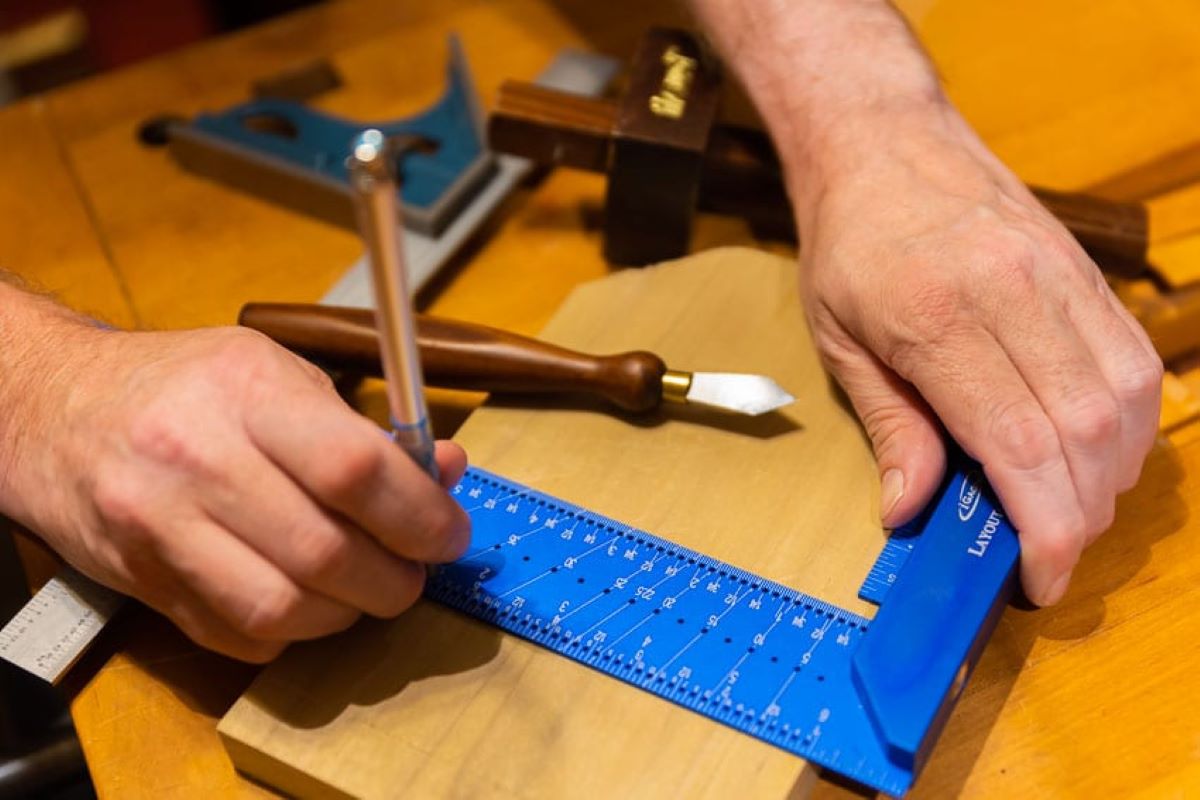
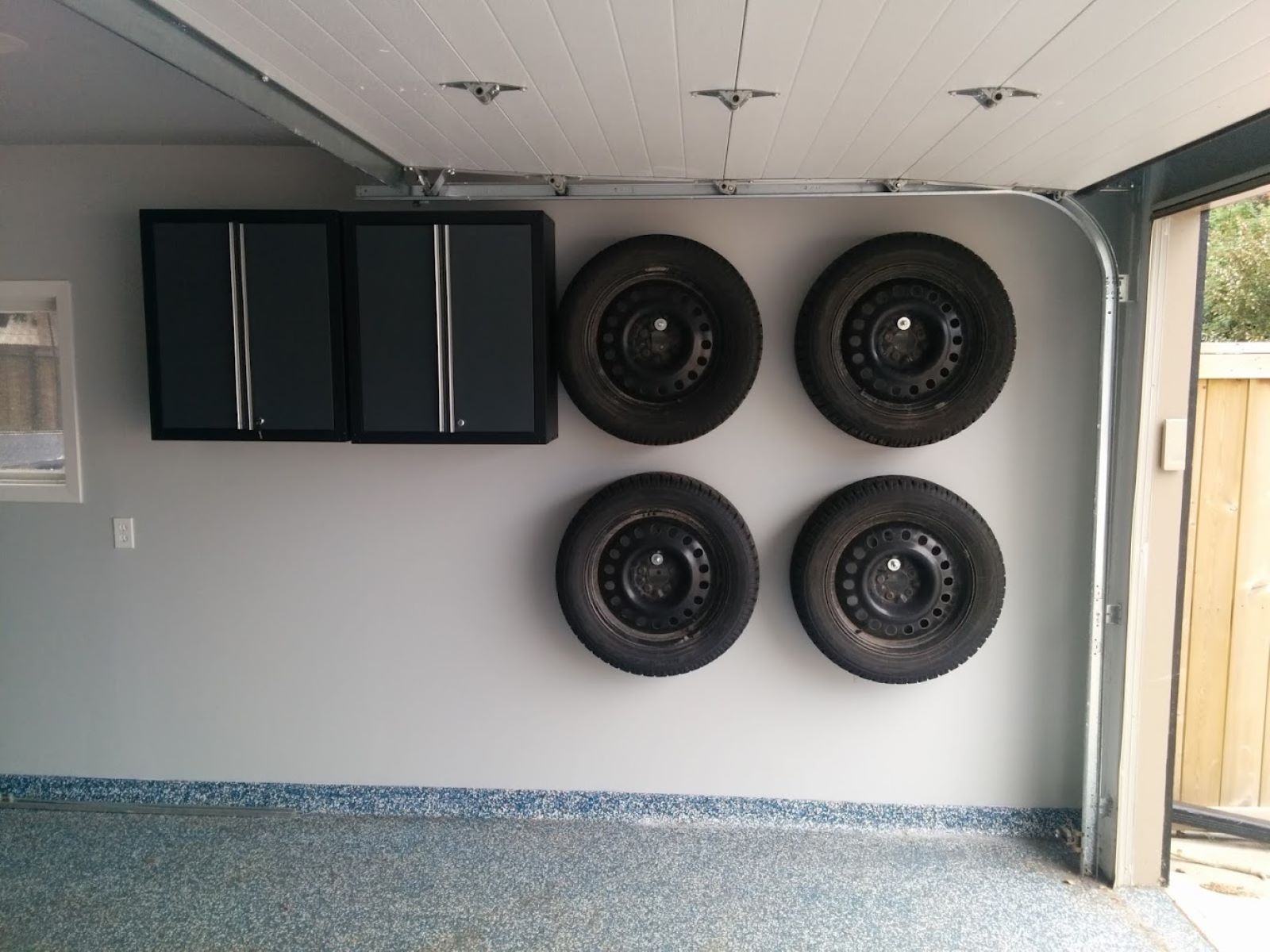
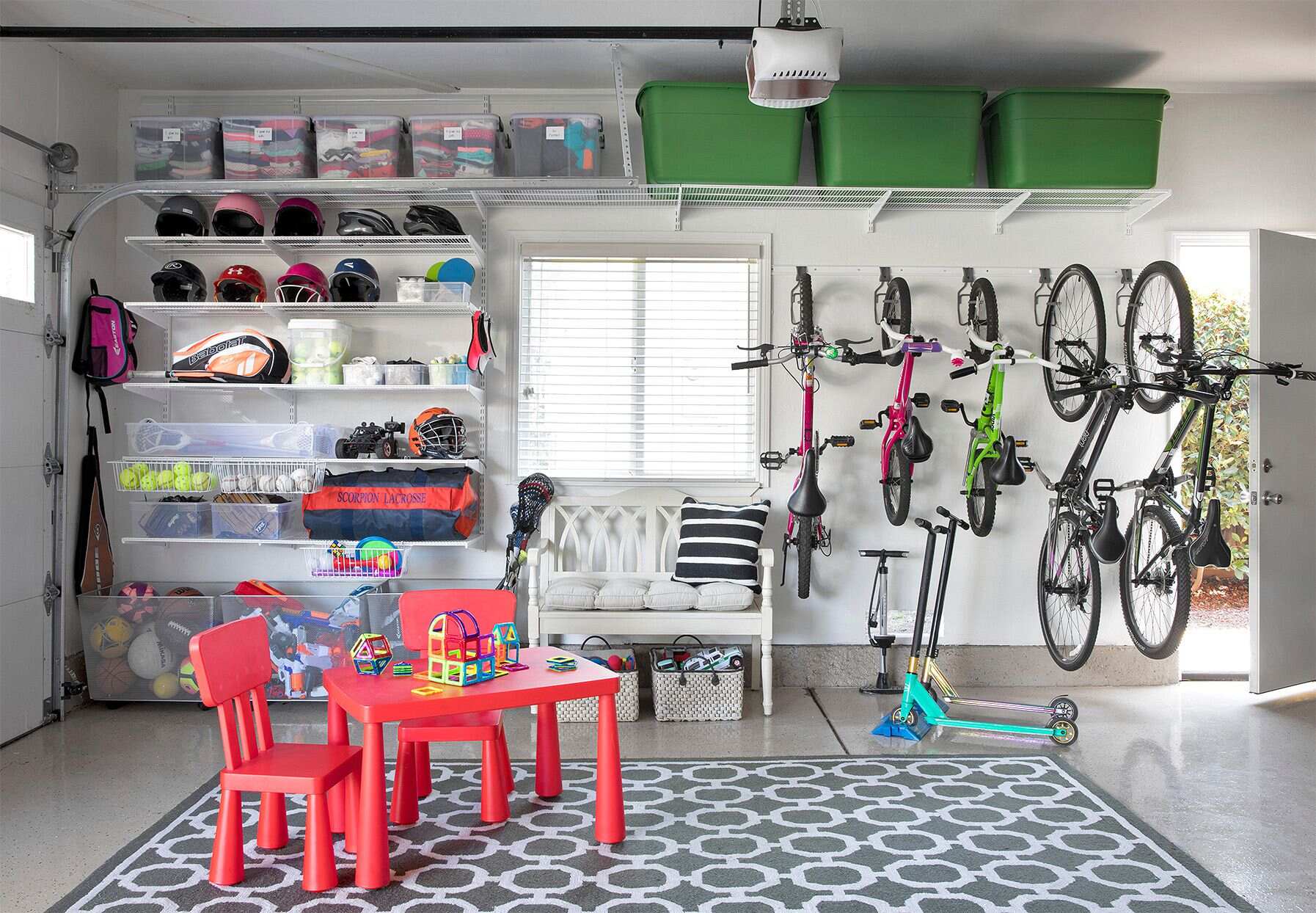
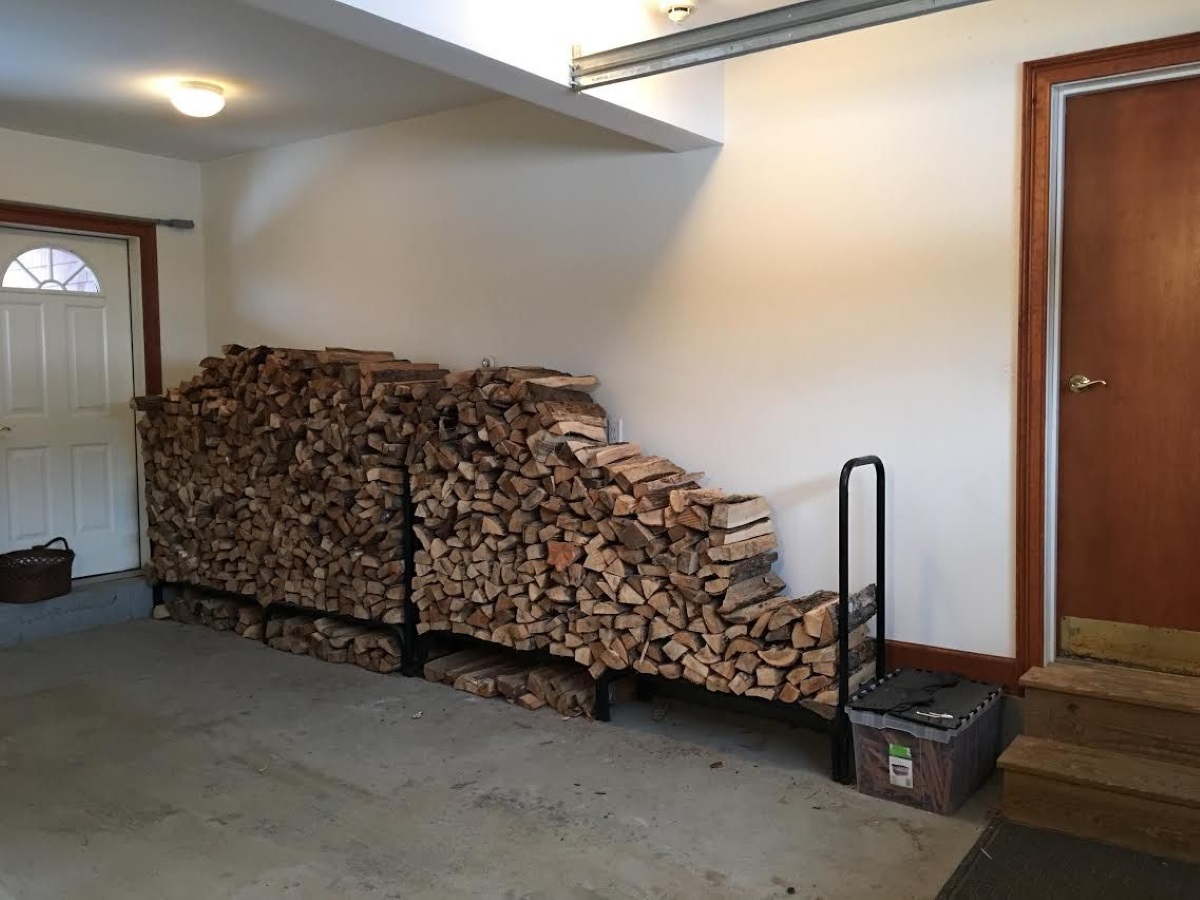


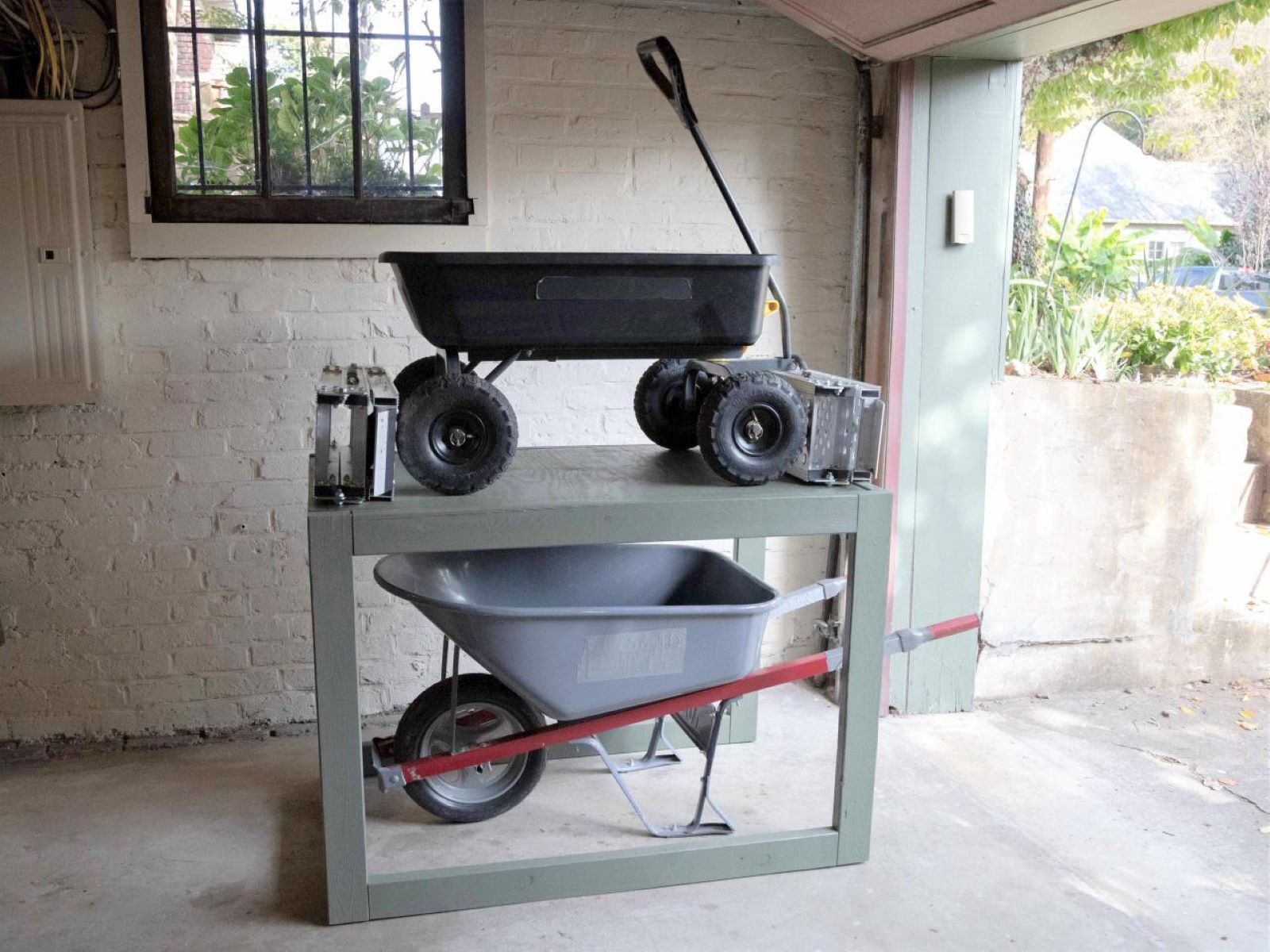
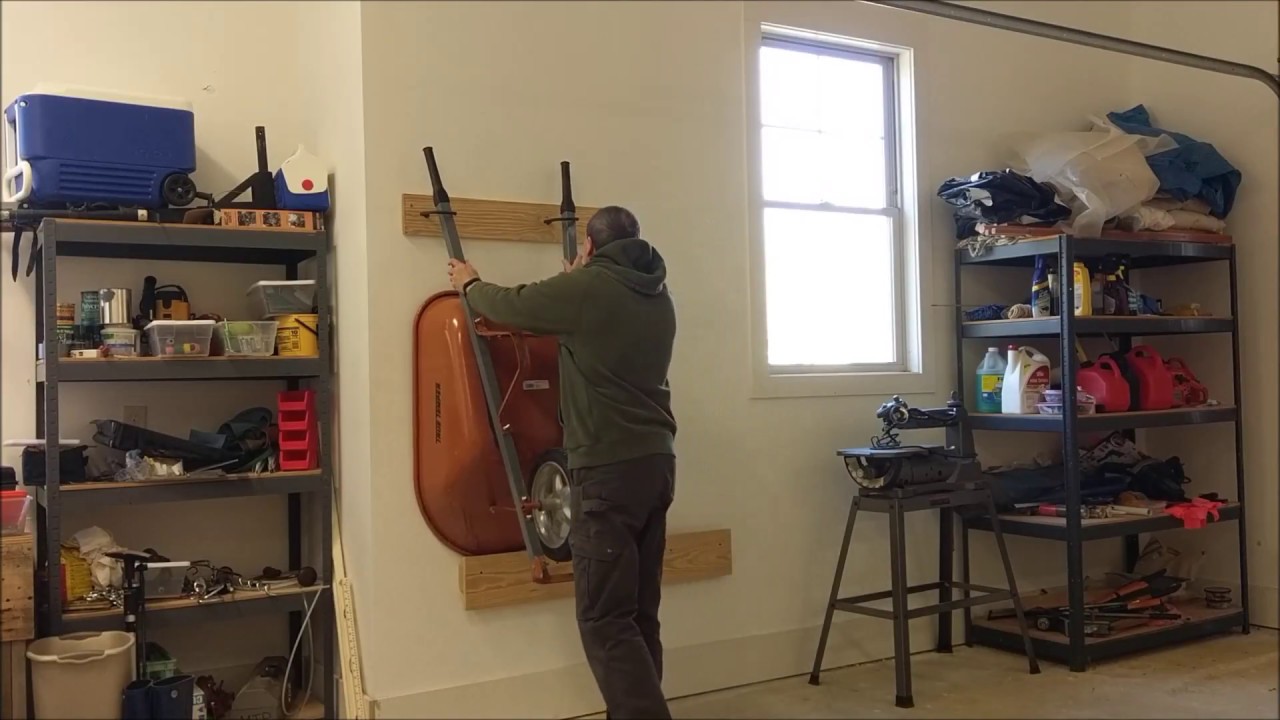
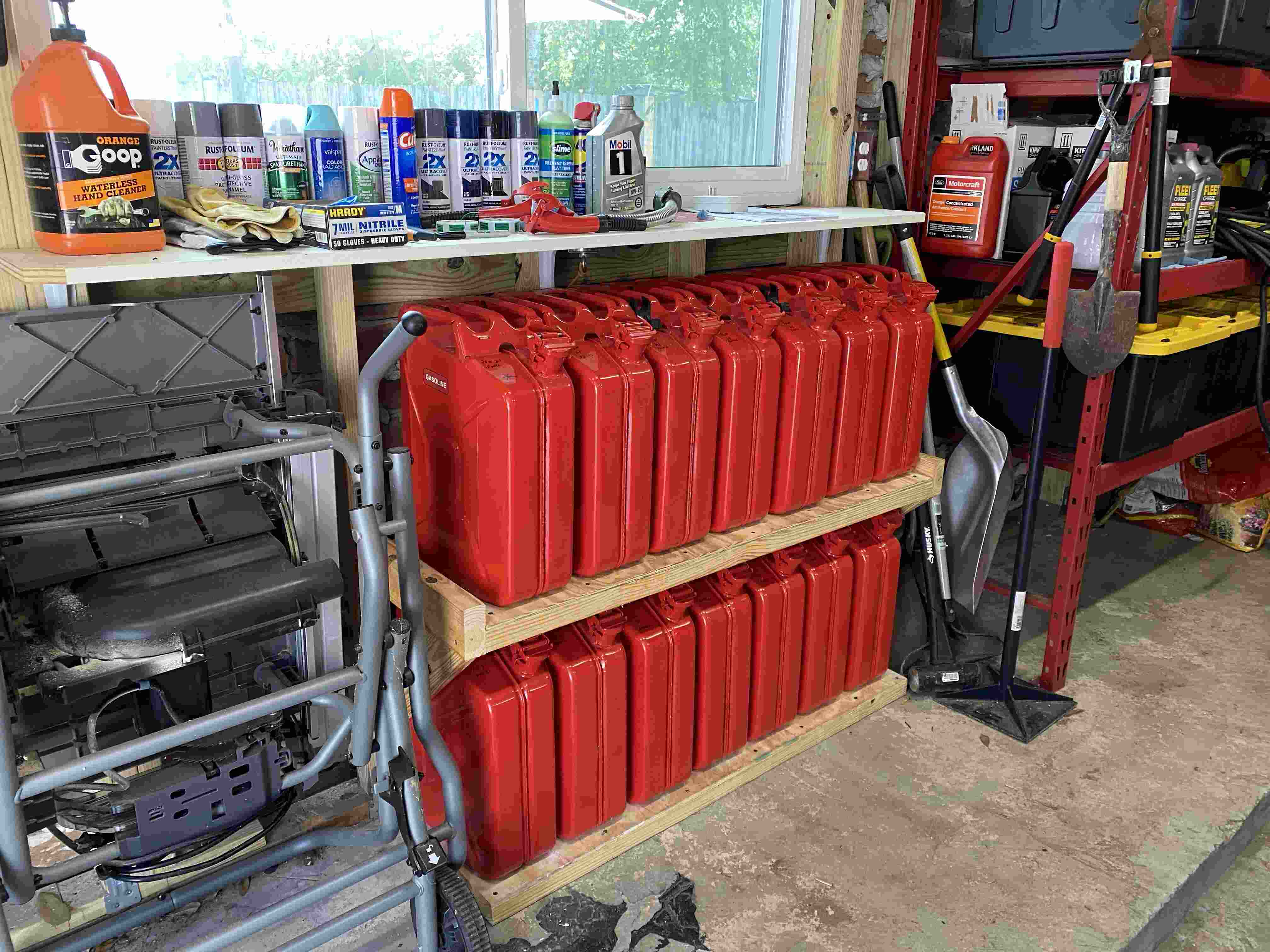



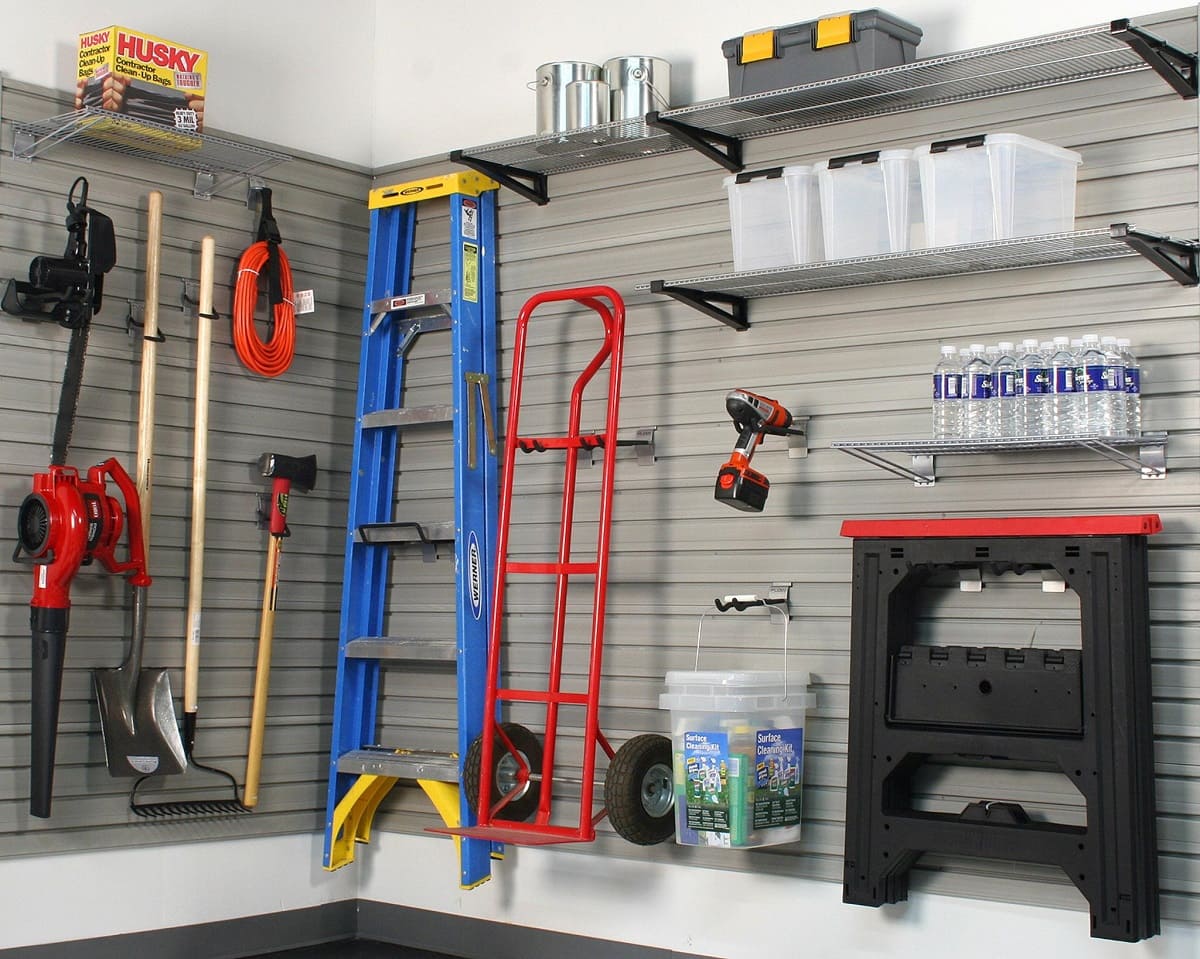

0 thoughts on “How To Store Lumber In Garage”